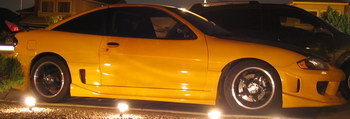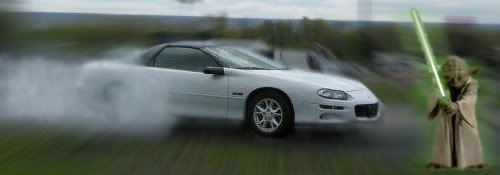This was pulled directly from the SCCA 2007 rulebook for the Engine mods allowed in STS class. Which are very minimal. If you're building a car for a particular class I'd suggest downloading the rulebook from the scca website so you are not protested and thrown out of your class. Especially at a regional or national class.
The other mods are likely fine however your stroker engine is a major mod and would certainly place you in SM (street mod) aka "Spend Money" class

14.10 ENGINE
Engine and transmission must remain unmodified, including emissions
equipment, except as noted below:
A. Internal baffling of oil pans may be added or modified. Addition or
modification of windage trays, crankshaft scrapers, and oil pump
pickups is not allowed.
B. Original equipment traction control systems may be electrically
disabled, but not removed or altered in any other way.
C. The air intake system up to, but not including, the engine inlet
may be modified or replaced. The engine inlet is the throttle body,
carburetor, compressor inlet, or intake manifold, whichever
comes first. The existing structure of the car may not be modified
for the passage of ducting from the air cleaner to the engine inlet.
Holes may be drilled for mounting. Emissions or engine management
components in the air intake system, such as a PCV valve,
or mass airflow sensor, may not be removed, modified, or replaced,
and must retain their original function along the flow path.
D. Exhaust manifolds and headers may be replaced with alternate
units which are emissions-legal. Relocation of the oxygen sensor
on the header is permitted. Alternate oxygen sensors, including
heated types, are permitted. This allowance does not permit
relocation of the catalytic converter (see 13.10.E). Exhaust heat
shields may be modified the minimum amount necessary to ac
commodate allowed alternate exhaust components.
E. The engine management system parameters and operation may
be modified only via the methods listed below. Any and all modifications
must meet or exceed the applicable US DOT emissions
standards for the year, make, and model of the car. These allowances
also apply to forced induction cars, except that no changes
to standard boost levels, intercoolers, or boost controls are permitted.
Boost changes indirectly resulting from allowed modifications
are permissible, but directly altering or modifying the boost
or turbo controls, either mechanically or electronically, is strictly
prohibited.
1. Reprogrammed ECU may be used in the standard housing.
Traction control parameters may not be altered. Altered
engine controllers may not alter boost levels in forced induction
engines.
2. Electronic components may be installed in-line between an
engine’s sensors and ECU. These components may alter the
signal coming from the sensor in order to affect the ECU’s
operation of engine management system. Example: fuel controllers
that modify the signal coming from an airflow sensor.
3. Fuel pressure regulators may be replaced in lieu of electronic
alterations to the fuel system. It is not permitted to electronically
modify the fuel system AND replace a fuel pressure
regulator.
4. Ignition timing may be set at any point on factory adjustable
distributor ignition systems.
5. VTEC controllers and other devices may be used which alter
the timing of factory standard electronic variable valve timing
systems.
6. All STS vehicles must comply with the Federal 49-state
safety and tailpipe emissions test requirements as a minimum.
F. Any mechanical shift linkage may be used.
G. Any accessory pulleys and belts of the same type (e.g., V-belt,
serpentine) as standard may be used. This allowance applies to
accessory pulleys only (e.g., alternator, water pump, power
steering pump, and crankshaft drive pulleys). It does not allow
replacement, modification, or substitution of pulleys, cogs, gears,
or belts which are part of cam, layshaft, or ignition drive or timing
systems, etc. Any crankshaft damper or pulley may be used.
SFI-rated dampers are recommended. Supercharged cars may
not change the effective diameter of any pulley which drives the
supercharger.
H. Upper engine shields made of plastic material, the purpose of
which is to hide mechanical components in the engine compartment,
may be removed if they have a solely aesthetic function.
I. Engine mounts may be replaced, but must attach in the factory
location(s) without additional modification or changes. Engine
position may not be changed. The volume of metal in a replacement
mount may not be increased relative to the volume of metal
found in a stock mount for the particular application. Solid metal
mounts are specifically prohibited. Any non-metallic inserts may
be used.
Hydraulic shock type rear engine locators, or bobble struts may
be replaced by manufacturer’s performance part, or aftermarket
replacement part. This part must retain factory dimensions and
attachment points, including factory design. (Example: If factory
locator/bobble strut is gas or hydraulic piston type, replacement
part must be gas or hydraulic piston type. No solid mounts may
be substituted.)
12.770 @ 111.99 Intercooled Eaton M62










